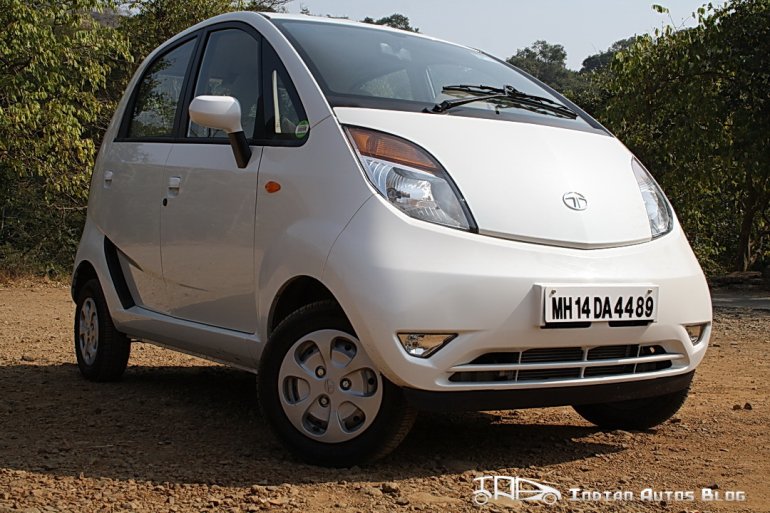 If you were a bit disappointed that Tata Motors has not done much to exteriors and interiors, I am pleased to say that most of the startling changes are to the mechanicals.
If you were a bit disappointed that Tata Motors has not done much to exteriors and interiors, I am pleased to say that most of the startling changes are to the mechanicals.
So buckle up to find out:
What powers the 2012 Nano?
Tata Motors did not change the capacity of the Nano’s engine. But they have tweaked it to produce a little more power while being kinder to your wallet. The 624 cc, twin cylinder engine now produces 38 PS instead of 35 PS. At the same time, Tata Motors obsession with ‘25kmpl’ has affected the Nano as well. The torque figure has also increased but only by 0.4kgm (4 Nm)
Start the engine and you notice reduced vibrations when the engine is idling. Put it in gear and you notice the clutch is significantly lighter than the older version. Once on the road, you feel that all those changes in the engine are not just marketing material for the brochure.
The 4-speed gearbox is also the same but the gear ratios are now taller. The car pulls fantastically in 2nd and 3rd gear. Overtaking ability of the Nano on public roads has significantly increased. There were many instances of the gear stick moving back and forward when accelerating in gear (A problem that is present in the Tata Vista as well).
Top speed is still limited to 105 km/hr but is very much achievable. Don’t be frightened if the engine light pops up at 105 km/hr. That’s just a warning light to tell you that you have hit the limiter.
How does the 2012 Nano handle?
If you have been driving any other car for long time, then you have to get accustomed to the Nano. Two simple reasons :
- No disc brakes in the front
- No power steering
Once you understand that fact, you will be able to drive the Nano without flinching.
The 2012 Nano’s handling has been improved with the help of an anti-roll bar in the front. The nose is now eager to go into corners and the body roll has also decreased (though very marginal). There is still a fair bit of hesitance to make sudden movements.
The steering gets lighter as the speed increases. Power steering is greatly missed but the Nano’s small turning circle is a boon.
The 135/70 R12 in the front and the 155/65 R12 in the rear surprised me with their ability to get in and out of potholes. The grip is adequete for city driving.
More than the power steering, the lack of disc brakes is sorely missed. The drum brakes do stop the car but there is very little feel in them. There were many instances of locked-up wheels when braking from average speeds. ABS, anyone?
Tata Motors claim that NVH levels have reduced in the revised model. To be honest, there is a fair bit of engine clatter and rattles in the interiors that make driving a very noisy experience.
Tata Motors has done a very good job of fixing some of the issues of the old Nano. The most astonishing part of the upgrade is that it comes free of cost. Tata Motors did not jack the price of the Nano one bit. Having said that, there is much work to be done. The 2012 Nano is a significant step forward but there a huge space for improvement.
Considering the masses now know that this is not a ‘1 lakh rupee’ car anymore, it is the time to improve the overall drivability of the Nano to make it at least on par with the Alto. Recently, there was news that Bosch is developing power-steering, ABS and disc brakes for the Nano. Trust me, these features will make a VAST difference to the driving experience of the Nano.
Sure, a Nano with those upgrades will cost a tad bit more that the ‘initial vision’, but it will most certainly be a step in the right direction.














